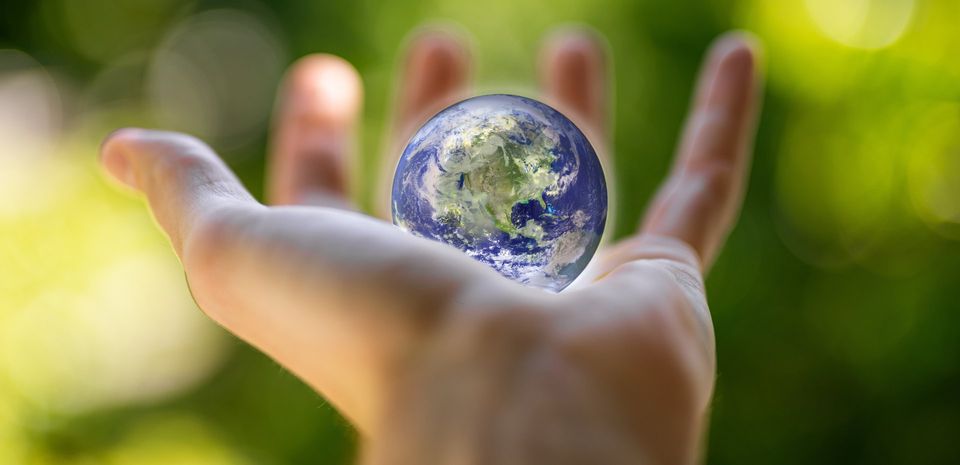The Sustainable Revolution
Fashion is having an epiphany, and you’re invited.
Eco-friendly fashion. It hasn’t always had the best image, but with the world suddenly acutely aware of the harm we are doing to our planet, sustainability has become the buzzword of the decade.
So what harm can fashion possibly cause? We, as a nation, are lovers of so-called ‘fast fashion’, on-trend, off-trend, it changes almost daily, and we all want to keep up. But the sinister cost of this desire for the latest killer dress, means we are killing our planet.
From low paid workers, to the burning of excess stock, the fashion industry is a dangerous threat to the environment.
Infinitely disposable, the fast fashion industry is responsible for huge amounts of water pollution and textile waste amongst other consequences.
You’d be forgiven expecting these kinds of practises being limited to the low cost high street stores and online £5 an item retailers, but it has been exposed that some of the higher end chains and designers are just as guilty of burning leftover stock to make way for new season clothing and accessories, creating tonnes of air pollutants every year, in turn affecting both our environment and our wildlife. Not to mention the questionable ethics of low cost items being a result of poor pay and working conditions for thousands of workers across the world.
So what is the answer?
Finding out the provenance of your clothing has never been so important. A new generation of designers are building their brands with a more conscious approach to fashion. Less waste, better working conditions and pay for manufacturing staff, sustainable materials and an emphasis on quality and longevity rather than quantity are at the core of these new businesses, and it’s about time we took notice.
H and M’s conscious clothing range has been around for some time now, but the brand is pushing their message heavily now, striving for a renewable fashion industry, using sustainable natural resources and offering a range of classic clothing that contain at least 50% recycled materials, organic materials or TENCEL TM Lyocell material. They’re trying to change on a big scale, and other large clothing chains are taking note. Their climate, circularity and water related production goals, alongside their ethical values sets the standard industry wide for a more sustainable and ecologically friendly approach to the world of fashion.
And it’s not just the high street making changes, some new designers are pioneering their sustainable goals within their own independent brands in order to make a difference.
Richard Malone collaborates with a collective of female weavers in India to develop beautiful natural fabrics using natural dyes and little water waste, and using no harmful chemicals that large brands lean towards in their search for profit over progress. He sources his fabrics ethically, and has also developed techniques which turned recycled plastic and viscose into yarn and fringing, as well as working with weavers on recycling ocean waste.
Samantha McCoach, founded her brand Le Kilt after learning her trade from her grandmother, a Scottish kiltmaker. She says “I want to encourage people to understand the value of their garments: the number of hands who have worked on them, the length of time it takes to weave the fabric, where the raw materials have come from. Then, they stop feeling disposable.”
Even big name designers like Stella McCartney are committed to producing low waste, sustainable fashion with a focus on pushing a circularity industry. Her company is striving for clothing that is restorative and regenerative by design and therefore the clothes we love never end up as waste.
Fashion giant Vogue has been seen highlighting initiatives like Eileen Fisher’s ‘Take Back’ programme in the US, and luxury brands striving for circularity and sustainability within their businesses, alongside a trend for carbon neutrality.
So, what has this to do with bridal fashion? Surely a dress you purchase once cannot produce waste that is harmful to our environment? Unfortunately, the opposite is true.
Bridal designers producing collections each season are no less wasteful than many of our high street brands, using unsustainable fabric sources, high waste production methods, low pay and poor conditions for cheap manufacturing and end of season waste is disposed of to make way for the new season of bridal gowns.
But there are alternatives for a planet conscious bride.
Choosing a designer/dressmaker has never been so important, and the issue of provenance comes back to us again. If we can see where our wedding dress originates, the methods used to produce it, the materials sourced to construct it, and the precious nature of the finished garment, rendering it un-disposable, it may just have an impact on the bridal industry with huge positive effects.
Catherine Blades designs and constructs every garment she makes by hand. A loving touch of course, but it’s so much more. She sources her fabrics from reputable and sustainable suppliers, ones with eco-creditials that are undeniable, she creates little to no manufacturing waste due to her hand made processes, and the finished garment is infused with so much love and positive energy, that no bride could ever part with the finished gown, creating treasured heirloom pieces and red carpet style dresses that can be worn again and again. What could be a better way to ensure that your wedding dress meets the standard of being eco-friendly? Of course, there’s more to saving the planet than having a dress hand made for you, but Catherine’s business values hold a holistic approach to garment creation too, with positive energy, reiki attuned dresses and creating strong, emotional relationships with her clients, all lead to a better understanding of customer values and what is important to them personally. Paired with her ecologically sound base, this approach makes her dresses exceptionally special, and a joy to own.


